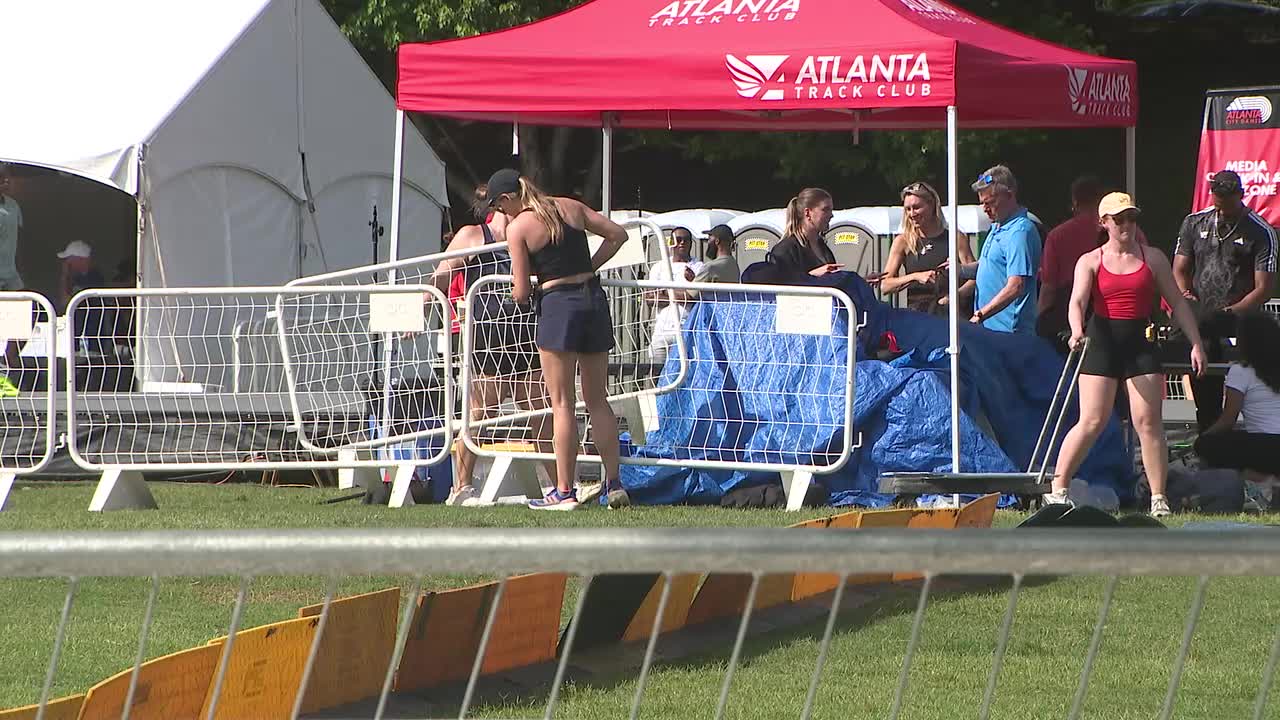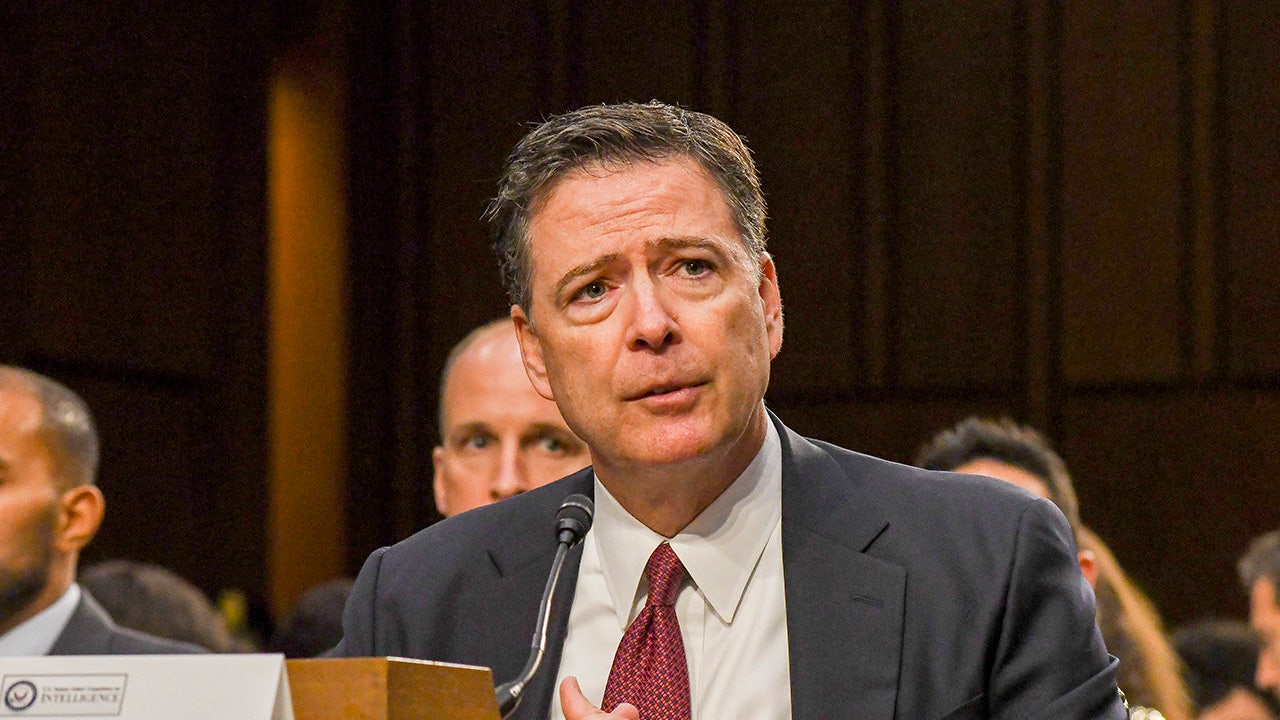Three American climbers lay in the dark, sharing a custom-made sleeping bag on a portable ledge dangling from a massive cliff high in the Himalayas. They were anchored to the north face of Mount Jannu, one of the world’s biggest, sheerest rock walls.
The void below them was 10,000 feet of thin black air. Above them, within reach, was something most people can only imagine.
“I know we still have a lot to do,” Alan Rousseau said to his two fellow climbers. “But I feel like we just did something cool.”
The next day, Rousseau, Matt Cornell and Jackson Marvell — little known outside of climbing circles, for the moment — stood at Jannu’s summit. Before them were the white tips of other major peaks, including Everest and Kangchenjunga.
They may not have had the full perspective. That is now coming from other top mountaineers, who see the group’s ascent of Jannu’s north face as a monumental achievement.
“In my mind, it’s the greatest climb ever — the greatest Alpine climb,” said Mark Synnott, a renowned climber and author who was stymied by Jannu’s north face in 2000 and called it the “last great problem in the Himalayas.”
At 25,295 feet, Jannu — with its remote location and combination of height, steepness and altitude — is one of the most daunting peaks for climbers. Its north face, especially, has stirred and vexed mountaineers.
Others had been to the top of Jannu, but not many. None had done this route in following the minimal ethos of an Alpine-style ascent: no supplemental oxygen, no ropes fixed in advance, no porters beyond base camp.
The three men used only what they could carry on their backs.
“It’s the simplest way of doing something,” Rousseau said. “You just begin at the bottom and go to the top.”
Rousseau, Cornell and Marvell gathered in Utah last week to share their story for the first time — the yearslong dream; the day-to-day struggle to ascend nearly 2 miles of mostly sheer rock and ice; the blackened, frostbitten fingertips that still needed to heal.
The three climbers had not yet fully processed their achievement.
“We did something we didn’t think was possible,” Rousseau said. “It gave us the realization that we can climb in one of the biggest arenas out there.”
They called their expedition “Round-trip Ticket,” in a nod to Valery Babanov and Sergey Kofanov, who completed an Alpine ascent of Jannu’s west pillar in 2007.
“Perhaps some day, a pair will climb a direct route on the north face in Alpine style,” Kofanov wrote in 2017, “but they’ll need to accept the likelihood that they’re buying themselves a one-way ticket.”
Camping in a Crevasse
The expedition began with a 30-hour drive from Kathmandu, Nepal. A hiking trek to base camp began at 5,000 feet of elevation, and for six days, the climbers used porters and pack animals to climb out of swampy junglelike terrain.
Base camp was established at the foot of Jannu’s north face in a meadow at 15,500 feet. Arriving Sept. 17, the climbers acclimated to the altitude and studied forecasts, searching for a weeklong window of clear weather.
In early October, they found a promising stretch.
“It removed a lot of stress,” Marvell said.
They prepared their climbing packs, taking advantage of ever-improving gear. Climbing tools — ice axes, crampons, ice screws, pitons and so on — are stronger and lighter than ever.
So are ropes. The climbers used two ropes, each 60 meters long. One was a 9-millimeter nylon rope for climbing, the other a thinner one so that the lead climber could lift gear, allowing teammates to concentrate and ascend without cargo on their backs.
They carried dehydrated food. They had one stove, one pot and one 2-pound sleeping bag, wide enough to fit three men, the better for body warmth.
The most helpful technical innovation might have been the two inflatable single-person portaledges, hanging perches that could be anchored to cliff sides so that climbers could rest. The climbers fastened the portaledges side-by-side and slept with their heads resting against the rock, their feet out over the void.
The climb began on a Saturday in October. It was “mixed” climbing — a mix of rock, snow and ice — with the men rotating into the lead position.
The first two days involved about 6,000 vertical feet of climbing, 60 meters of rope at a time.
They slept the first night at 19,000 feet, in a crack “where the glacier movement separates away from the ice that’s stuck to the mountain face,” Rousseau said. “Which sounds crazy to a lot of people, that we camped inside a crevasse, essentially.”
They could feel and hear the movement of the glacial ice.
(Jackson Marvell via The New York Times)
A photo by Jackson Marvell of fellow climbers Alan Rousseau, left, and Matt Cornell on Mount Jannu in October. No previous climbers had done an Alpine-style ascent Ñ no supplemental oxygen, no ropes fixed in advance, no porters beyond base camp Ñ of the north face of the HimalayasÕ Mount Jannu.
“It’s just wild to see how fast that is pulling away from the mountain and how active it is,” Marvell said.
Such instability was a constant danger. Falling rock and ice routinely showered the men. Shards sliced through their tarp, as they rested on their portaledges at night, but caused no injuries.
“They weren’t big enough to hurt you,” Cornell said of the shards. “They would just destroy all your gear.”
On the fourth day, Cornell was below Rousseau and Marvell when he saw them disappear in a cloud of falling ice and snow.
“Oh, God, they’re going to be killed by this thing, it’s going to rip the anchor out, and then it’s going to pull me down because I’m attached to the rope,” Cornell recalled thinking. “So, I was just bracing, ready to be sent down the mountain. And then it all, like, clears past them, and they’re moving around, like: We’re good!”
The men laughed together at the retelling. They slept that night in the pocket that the fallen chunk of ice had left behind. The hood of Marvell’s jacket was sliced open in the episode. “I was blowing feathers the rest of the climb,” he said.
Cornell led the group through a long block of technical pitches on the fifth day, as the men moved beyond the apexes of other Alpine-style attempts. They were nearing the top of the north face.
“Improbability faded away,” Marvell said.
On a 10-hour sixth day, they reached the top of the wall — the real goal — and climbed a tricky but nonvertical stretch toward the summit.
Before getting there, Marvell took a glove off and found his fingers blistered, a sign of severe frostbite. The men discussed options.
“We’re 100 meters from the top, and we have the weather window of the decade,” Marvell said. “Is it worth potentially losing the tip of a finger, you know, or will this frostbite get worse? And it seemed to me to be worth the risk.”
They reached Jannu’s summit at 4:20 p.m. on Oct. 12 and stayed for just a few minutes. The mission was never the top but the climb.
“Getting to the top of Jannu was kind of like crossing the ‘t’ and dotting the ‘i,’” Rousseau said.
(Jackson Marvell via The New York Times)
A photo by Matt Cornell of fellow climbers Jackson Marvell and Alan Rousseau on the shoulder atop Mount Jannus head wall in October. No previous climbers had done an Alpine-style ascent no supplemental oxygen, no ropes fixed in advance, and no porters beyond the base camp of the north face of the HimalayasÕ Mount Jannu.
The Height Is Not the Point
Their accomplishment has the climbing world buzzing. It represents a tonic to the media-obsessed, big-money, guide-led, fixed-rope conga-line parades on mountains such as Everest. Such mass upward migrations do not interest blue-collar mountaineers such as these.
“I have been asked a couple of times if I climbed the north face of Jannu to train to eventually climb Everest,” Rousseau said. He shook his head. “It’s a different sport than that sport.”
For alpinists, the public’s fascination with the highest mountains is a bit like judging an ocean swimmer by how deep the water is. Marvell has had similar queries from well-meaning acquaintances: How high is Jannu?
“That’s not really the point,” he said.
Hundreds typically reach the summit of Everest every spring. Those with the skill, strength and imagination to consider the likes of Jannu’s north face, with a willingness to dare to be first, might number in the tens.
The mountain’s 3,000-foot head wall, parts of it overhanging and spackled in corniced snow and ice, is roughly the size of El Capitan, in California’s Yosemite Valley. The section foiled previous attempts, including one by Ueli Steck and three others nearly two decades ago.
In 2004, about a dozen Russians laid siege to Jannu’s north face, drilling it with bolts, draping it with dozens of fixed ropes, swapping out men when they became hurt or exhausted. The nearly two-month expedition succeeded and was considered an extraordinary feat, earning the Russians a Piolet d’Or, Alpine climbing’s top award.
This was not that. This was three men, two ropes and one shared sleeping bag.
(Jackson Marvell via The New York Times)
A photo by Jackson Marvell of the sleeping tent for himself and fellow climbers Alan Rousseau and Matt Cornell on Mount Jannu in October. No previous climbers had done an Alpine-style ascent Ñ no supplemental oxygen, no ropes fixed in advance, no porters beyond base camp Ñ of the north face of the HimalayasÕ Mount Jannu.
“It was much more a kind of personal thing as opposed to, like, what outside statement it made about anything,” Rousseau said of their climb.
Conrad Anker, a leading mountaineer of the past several decades, considers the Alpine-style climb of Jannu’s north face to be a generational feat. He called it “an antidote to fixed-rope, high-altitude tourism.”
“There are so many different ways we play with gravity on cliffs,” Anker said. “This is the purest, the most demanding, the ultimate expression.”
Anker, 61, said he had reviewed the past 30 years of Piolet d’Or winners, and “there is no climb that matches this.”
He was part of a three-man team, with Jimmy Chin and Renan Ozturk, that scaled an improbable route up Mount Meru, another vaunted Himalayan peak, in 2011. That expedition was detailed in the award-winning documentary “Meru.”
“Meru pales in comparison to this,” Anker said, citing Jannu’s greater length, height and elevation.
Rousseau, Cornell and Marvell have been climbing together for about four years, in pairs and sometimes together. Two previous attempts on Jannu’s north face, in 2021 and 2022, ended early but were valuable scouting trips. Last year, the three scaled what Climbing magazine called “one of the most legendary lines in North American alpinism”: the Slovak Direct route on Denali, also known as Mount McKinley, in Alaska.
“That was sort of a trial run, to see how we all jibe together, moving through that kind of terrain,” Rousseau said. “And that worked out pretty well for us.”
Now, they are climbing’s newest power throuple.
(Jackson Marvell via The New York Times) A photo by Jackson Marvell of fellow climbers, from left: Alan Rousseau, Matt Cornell and himself on Mount Jannu in October. No previous climbers had done an Alpine-style ascent Ñ no supplemental oxygen, no ropes fixed in advance, no porters beyond base camp Ñ of the north face of the HimalayasÕ Mount Jannu.
Rousseau, 37, is married and lives along the foothills in Salt Lake City. He guides climbers in Utah and beyond. Experience in leading others makes him the logistical leader and a calculated voice when circumstances demand difficult decisions.
Cornell, 29, is known as a quiet, compact free-solo (no rope) ice climber. He usually spends winters near Bozeman, Montana, and summers around the rock-climbing hub of Yosemite National Park, working at a restaurant (owned by Anker, a mentor) to help fund his pursuits. He lives in a 2003 Freightliner van, with 320,000 miles, fitted with a bed, stove and other amenities.
Marvell, 27, lives in Heber City, Utah, and has a few sponsorship deals and also his own welding business. Tall and wiry, he spends summers off the coast of Alaska, climbing up and rappelling down oil platforms, timing repair work with the tides. Having grown up in Utah, he was drawn toward the sandstone towers of the desert and was willing to attempt just about anything.
The descent from Jannu’s summit, by a series of rappels that hopscotched back down the face, stretched to midnight the next day. By then, Rousseau, too, had frostbite across his fingers. After a day at base camp, the men flew in a helicopter back to Kathmandu, where Rousseau and Marvell spent five days in a hospital, getting their hands treated.
Healing continues, and the men hope not to lose any fingertips.
The three already have plans for another monumental climb.
They do not include Everest. Something bigger.
This article originally appeared in The New York Times.





























